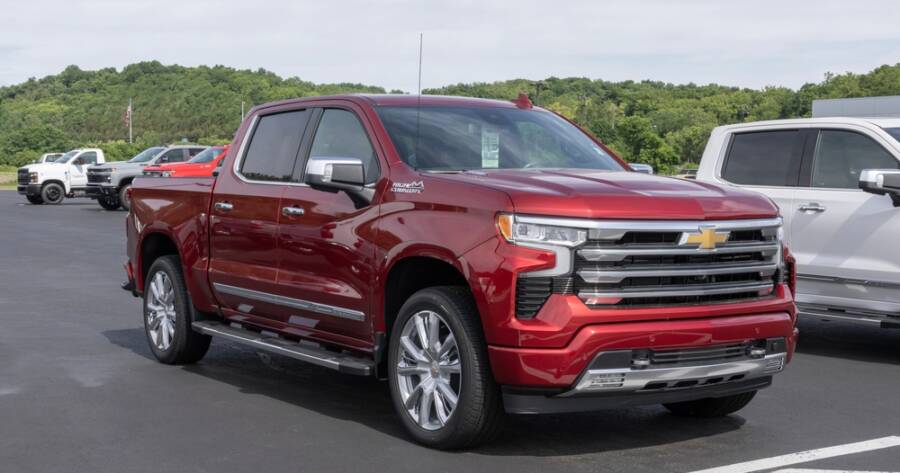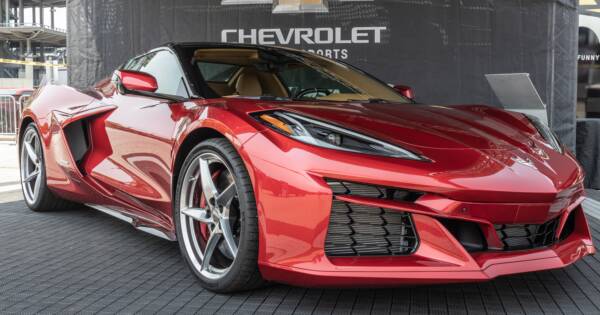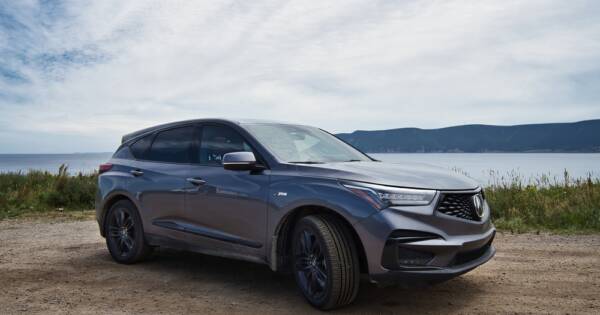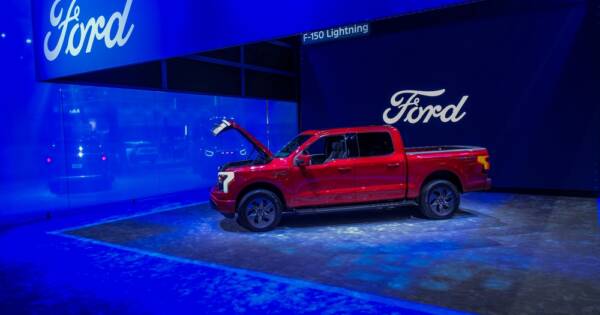The race to dominate the electric pickup segment has intensified as Chevrolet and Ford push their flagship trucks into the spotlight. The Silverado EV emphasizes range, towing strength, and a future-leaning design, while the F-150 Lightning builds on its proven platform with smart power delivery and practical work features. Both target drivers seeking capability without sacrificing efficiency. With each model advancing quickly, the battle for leadership in the electric truck market is becoming increasingly competitive.
Power and Performance
Both the Silverado EV and the F-150 Lightning come packed with serious electric muscle. The F-150 Lightning offers dual electric motors and comes with standard all-wheel drive. Depending on the trim and battery option, the truck delivers up to 580 horsepower and a powerful torque rating that gives it solid towing capabilities.
The Silverado EV also uses dual motors and has been engineered on GM’s Ultium platform. Early figures suggest it matches or exceeds the Lightning in horsepower, with strong acceleration and high towing numbers. One standout feature of the Silverado EV is its independent rear suspension, which may offer a smoother ride compared to the Lightning’s traditional rear axle.
In both trucks, acceleration is impressive. Electric torque gives drivers immediate power, whether towing a trailer or cruising on the highway. While both perform well, the Silverado EV’s dedicated EV platform may give it a slight edge in handling and balance.
Range and Charging
When it comes to range, both trucks aim to deliver enough battery power to cover daily work and weekend adventures. Ford’s F-150 Lightning offers two battery configurations. The extended-range version can travel over 300 miles on a single charge, depending on conditions and load.
Chevrolet’s Silverado EV is estimated to go even farther. GM claims a full charge could deliver up to 400 miles, making it one of the longest-range EV trucks currently announced. However, this number may vary based on how it’s driven and what it’s carrying.
For charging, both trucks are compatible with DC fast-charging, allowing them to recover significant range in a short period. Ford provides access to the BlueOval Charge Network, while Chevy owners can use the Ultium Charge 360 network. These systems make long trips more manageable by providing public charging options across the country.
Interior Features and Storage
Inside, the two trucks take different approaches to layout and tech. The Ford F-150 Lightning sticks closely to the familiar interior of its gas-powered sibling but adds modern EV features. A large touchscreen, digital instrument cluster, and available hands-free driving tech are just some of the options. The frunk (front trunk) also adds secure cargo space up front, a bonus for storing tools or gear.
The Silverado EV goes in a bolder direction, with a new cabin design that breaks away from traditional truck interiors. A wide infotainment screen dominates the dash, and the rear seats offer generous space thanks to a flat floor design. One unique feature is the Multi-Flex Midgate, which lets you fold down the rear seats and part of the wall to expand bed space into the cabin. This is especially useful for hauling long items.
Both trucks also offer built-in outlets that can power tools, appliances, or even homes in emergencies. This “vehicle-to-load” feature is a major selling point for drivers who use their trucks for both work and recreation.
Practical Considerations
For truck buyers, practical features like towing, bed access, and available trims can make or break the decision. The F-150 Lightning supports several configurations, including work-focused trims and high-end models. It offers helpful tools like onboard scales, trailer backup assist, and a Pro Power Onboard system that turns the truck into a mobile generator.
The Silverado EV, while still rolling out its first trims, is positioning itself as a more forward-thinking truck. Features like four-wheel steering, a fixed glass roof, and hands-free trailering hint at where Chevrolet is heading with EV design.
One difference that might matter to buyers is production timing. Ford was quicker to market with the Lightning, and it’s already on roads. Chevy’s Silverado EV is launching in phases, with early models reaching buyers in select markets and more configurations coming later.
Two Strong Contenders With Different Strengths
Choosing between the Chevrolet Silverado EV and the Ford F-150 Lightning comes down to priorities. The F-150 Lightning feels familiar and proven, offering strong performance with a traditional truck layout. It’s a great choice for those ready to go electric without straying too far from what they know. The Silverado EV, by contrast, pushes boundaries with fresh design and class-leading range. It may appeal more to drivers looking for innovation and longer road trips between charges.
In the end, both trucks represent the future of American pickups—powerful, practical, and fully electric. The best one for you depends on how you drive, what you haul, and how bold you’re ready to go.




